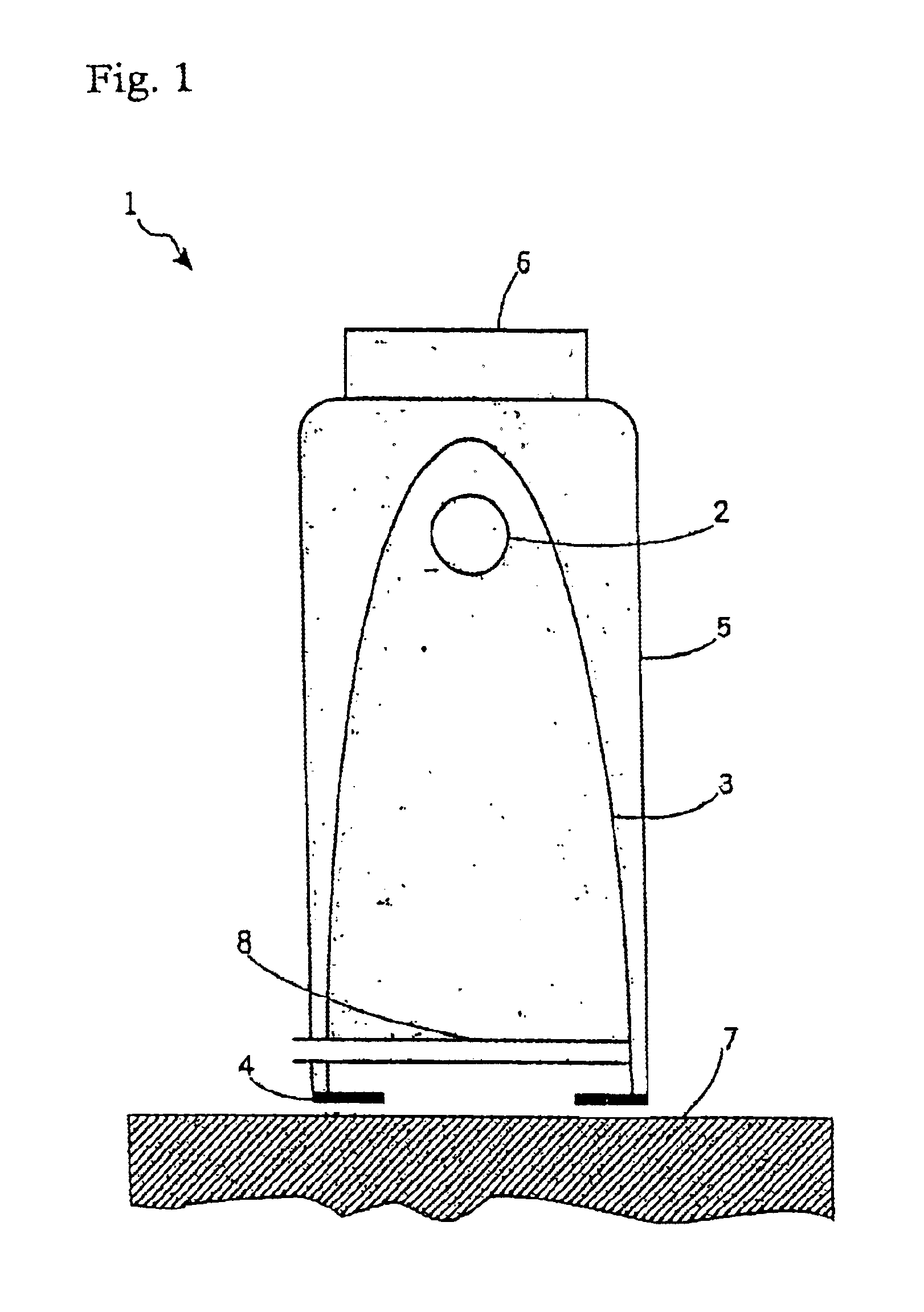Irradiation device for therapeutic treatment of skin and other ailments
a technology of irradiation device and skin, applied in the field of irradiation device, can solve problems such as complications in wound healing, achieve the effects of reducing the achievable pulse length, avoiding necrosis of irradiated cells, and reducing heat transition resistan
- Summary
- Abstract
- Description
- Claims
- Application Information
AI Technical Summary
Benefits of technology
Problems solved by technology
Method used
Image
Examples
Embodiment Construction
[0068]The irradiation device 1 comprises a broadband irradiation source 2 which is preferably a xenon flashlamp. The irradiation source 2 is mounted in the focus of a parabolic reflector 3 which is open on the side averted from the focus. The exit area at the open end of the parabolic reflector 3 is preferably defined through an adjustable shutter. The adjustable shutter can adjust the area to be irradiated. The irradiation source 2 and the paraboloid reflector 3 are mounted in a housing 5. The housing 5 comprises a handpiece 6 by means of which the irradiation device 1 can be placed on the area to be treated 7. Between the radiation source 2 and the area to be treated 7 there is a luminescent foil 8 arranged which is doped with luminescent particles. The luminescent foil 8 can also be arranged in the proximity of the radiation source 2 or the shutter 4. Preferably, the luminescent foil 8 is arranged in a way that makes it easy to replace. This simplifies the necessary replacement d...
PUM
 Login to View More
Login to View More Abstract
Description
Claims
Application Information
 Login to View More
Login to View More - R&D
- Intellectual Property
- Life Sciences
- Materials
- Tech Scout
- Unparalleled Data Quality
- Higher Quality Content
- 60% Fewer Hallucinations
Browse by: Latest US Patents, China's latest patents, Technical Efficacy Thesaurus, Application Domain, Technology Topic, Popular Technical Reports.
© 2025 PatSnap. All rights reserved.Legal|Privacy policy|Modern Slavery Act Transparency Statement|Sitemap|About US| Contact US: help@patsnap.com



